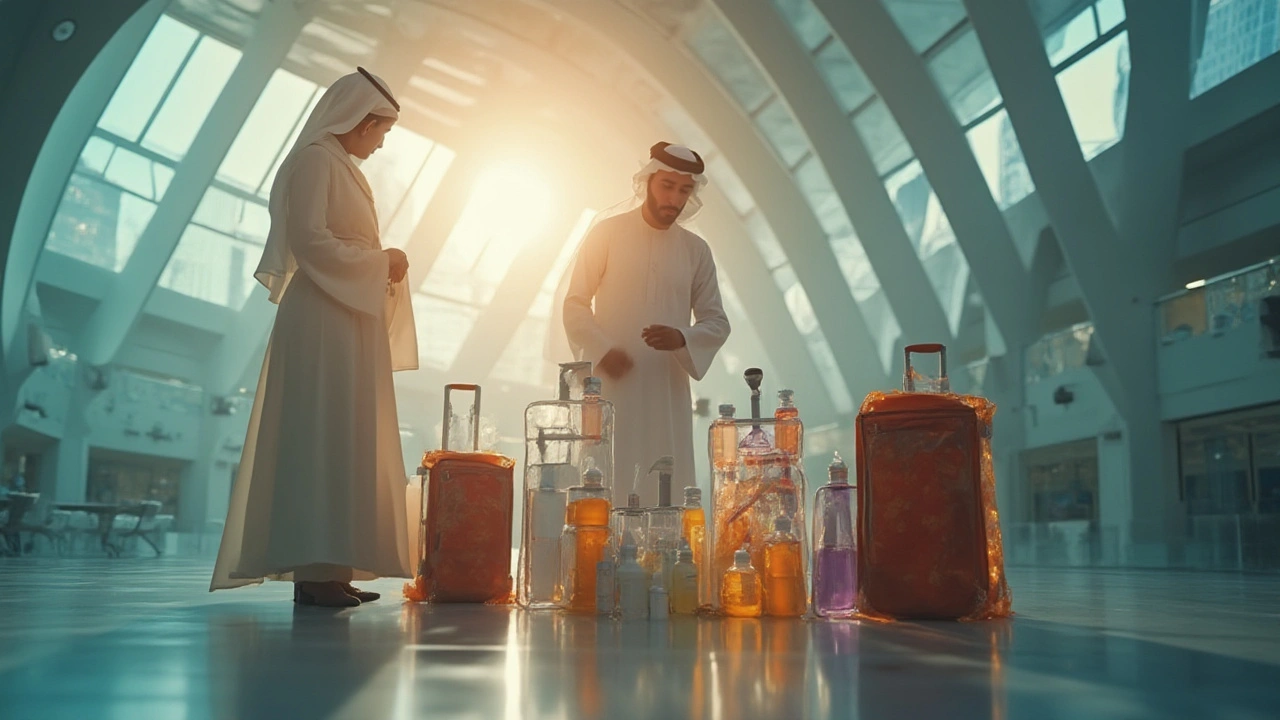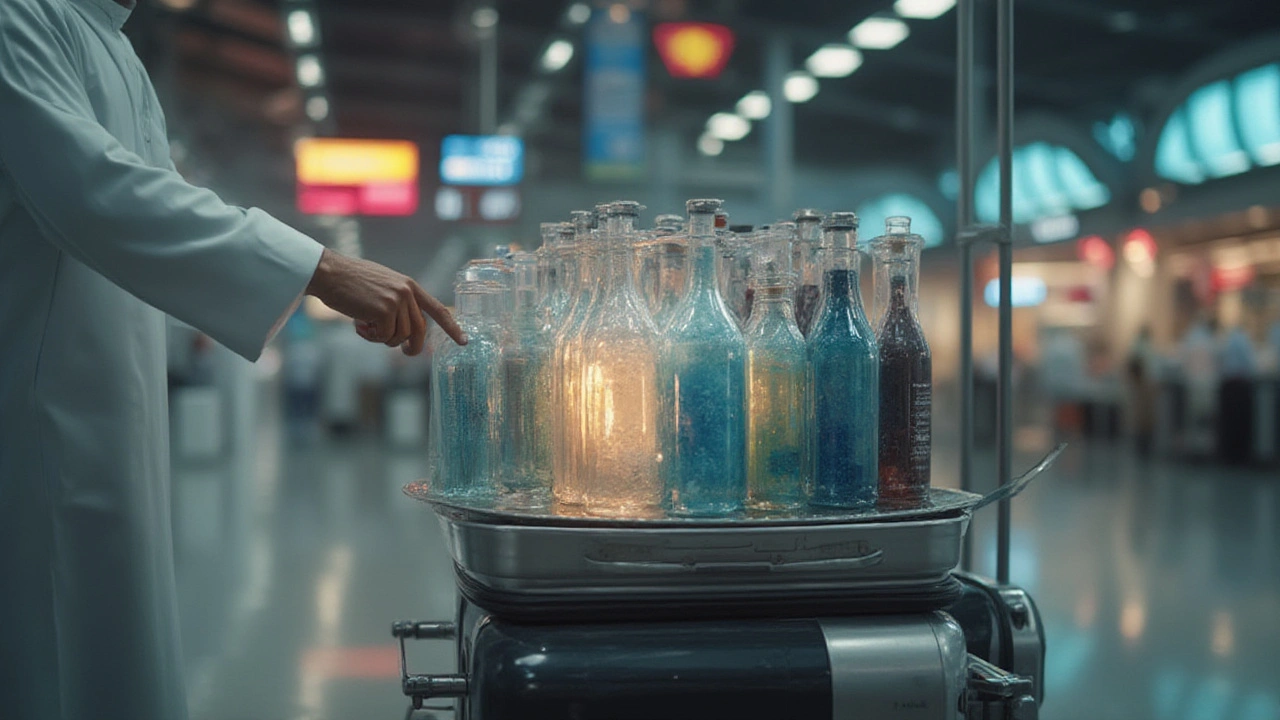
Ever stood sweating in the security line, yanking random lip balms and face creams from your bag, dreading that your shampoo will set off alarm bells? The clock’s ticking, the crowd behind you’s growing impatient, and you’d pay a small fortune for someone to just tell you: what’s allowed and what’s not? The magic formula is called the 3-1-1 rule — it sounds like a locker combination, but it’s the mini Bible of carry-on packing for flyers ever since the mid-2000s. Miss it, and you might as well wave goodbye to your favorite perfume right at the conveyor belt.
What Is the 3-1-1 Rule and Why Does It Exist?
Let's break down what this rule looks like in plain English. The 3-1-1 rule is a policy enforced by the Transportation Security Administration (TSA) in the United States and echoed by other security agencies worldwide. It strictly controls how much liquid you can carry in your hand luggage onto a plane. The name '3-1-1' isn’t just a catchy title — it actually describes the rule:
- 3: Every liquid container in your carry-on can’t be bigger than 3.4 ounces (100 milliliters). That’s the '3'—but don’t confuse it, it’s not 3 ounces, it’s 3.4! Get sneaky with a 4-ounce sunscreen and you’ll lose it at the scanner.
- 1: All those little bottles and tubes must fit inside a 1-quart-sized, clear, resealable plastic bag (the '1'). Sandwich bags from the grocery store work for most people, but don’t overstuff them — security agents are vigilant.
- 1: Only one bag per passenger (the last '1'). Yes, just one. Trying to sneak in a second bag will get you a polite-but-firm rejection, and possibly a public display of all your moisturizers on the inspection table.
Why the fuss? It all traces back to a foiled 2006 terrorist plot in the UK. Authorities learned that certain liquid explosives could be combined mid-air, turning everyday toiletries into ingredients for disaster. That’s when airports worldwide clamped down on carry-on liquids, and the 3-1-1 rule was born. Since then, it’s saved plenty of drama at the checkpoint, but also left millions grumbling over tiny travel-sized toothpaste packs.
This rule isn’t just a stateside thing, by the way. Most major airports worldwide follow similar guidelines. The European Union’s liquid restrictions are almost identical, and many Asian and Middle Eastern airports have similar setups. Still, always check specific airport rules before you fly — some countries twist the limits, and others get even stricter.
What Counts as a Liquid, and What Gets the Green Light?
You’d think 'liquid' is a straightforward word: water, juice, perfume, right? Not so fast. The TSA has a wider definition, and it trips up travelers every day. There’s a whole spectrum of what counts:
- Liquids: Obvious stuff — water, coffee, soda, alcohol, juice, soup, oil.
- Gels: Hair gel, shaving cream, toothpaste, lip gloss, liquid mascara, aloe vera sprays.
- Aerosols: Hairspray, deodorants, spray sunscreens, mousse.
- Creams and Pastes: Face moisturizers, ointments, peanut butter (yep!), jams, hand sanitizer, yogurt.
- Other: Snow globes, liquid lipsticks, contact lens solution, and even pudding.
Basically, if it pours, squeezes, mists, sprays, or oozes, it gets counted. Butter and soft cheese have famously gotten people in trouble, for real — some officers go by the slightly gross guideline: if you can smear it, it’s a liquid/gel.
There are exceptions, though, so don’t panic if you require medication, baby formula, or breast milk. The TSA allows liquid medicines, baby nutrition, and special dietary liquids over 3.4 ounces, but you’ll need to declare them and maybe endure an extra check. The same goes for duty-free items bought after security — they get sealed in secure bags with the receipt. Pouring wine from your carry-on bottle mid-flight, though? Prepare for an airline drama.

Real-World Tips for Stress-Free Packing and Quick Security
I used to overpack, always afraid I’d be parched or miss my favorite scent at some dull airport. Let’s just say: nothing shakes you up like having your new, full-size hair serum confiscated in front of dozens of tired travelers. There’s a better way to breeze through security, keep your skin glowing, and enjoy less drama in the plastic bin. Here’s how:
- Collect travel-size bottles throughout the year. Don’t wait until a day before your flight — major stores sell sets, but my go-to is reusing little beauty sample containers. They fit shampoo, sunscreen, even salad dressing! Just label them — no one wants mouthwash hair.
- Don’t overstuff your quart bag. If TSA can’t zip it, it’s too much. Pack essentials only. I stash non-liquid items (like powder makeup, solid soaps) elsewhere to save space in that magic bag.
- Put your 1-quart bag at the top of your carry-on. Security wants it in a tray, alone, not buried between five shoes and your laptop. Instant bonus points for efficiency!
- Remember the 'smear test' for soups and sauces. If you can spread it on toast, it’s a liquid or gel. Put your hummus in your checked bag, not your tote.
- If you’re bringing medicine, keep it packed and clearly labeled. Tell the officer you have it — honesty speeds up checks.
Just to put things into perspective, here’s a quick comparison of liquid rules across a few major airports:
| Location | Liquid Limit | Bag Size | Exceptions |
|---|---|---|---|
| USA (TSA) | 3.4 oz (100 ml) each | 1 quart (1L) | Medications, infant formula, breast milk |
| United Kingdom | 100 ml each | 1 litre (clear plastic) | Medications, special dietary needs |
| EU (Schengen) | 100 ml each | 1 litre (transparent) | Medications, baby foods |
| Dubai | 100 ml each | 1 litre (resealable) | Medicines, baby food (with proof) |
Some airports in Australia, Singapore, and New Zealand follow the same standards. Japan and Korea do, too — but always check your airline or airport site before flying, since policies change. And if you're flying with connecting layovers, remember each airport may redo the entire security sweep.
New Trends and the Future of Carry-On Liquid Rules
The 3-1-1 rule has stuck around for over fifteen years, partly because no one’s cracked a more practical solution for keeping flights safe and lines moving. But that’s slowly changing — in bits and pieces, at certain airports, AI and new scanning machines may soon let us bring larger bottles without all the fuss. During 2023, London’s Heathrow and a handful of airports in Europe began using scanners that even allowed some travelers to keep laptops, tablets, and bigger liquid bottles in their bags, speeding things up notably.
Still, these high-tech scanners aren’t everywhere. In the US, you’ll find a few at big international airports, but most travelers are still wrestling with their Ziploc bags. Some TSA agents started testing more lenient versions of the 3-1-1 rule for PreCheck users, but don’t count on it — for most folks, the rule is still king.
So, what does it mean for your next trip? Don’t expect big changes yet. Packing small is still the safest plan. The good news: tons of personal care brands now design products just below 100ml. Solid shampoos, face sticks, and powdered cleansers are more common than ever, saving you precious space in your quart bag. I switched to these a few years ago, and Marcus, my husband, loves that our shared case isn’t a squishy mess from toiletries busting open mid-flight.
If new rules pop up, they’ll show on your airline’s site or the airport’s security section first. For now, grab those 3.4-ounce containers, keep your clear bag ready, and know what truly counts as a liquid. You won’t just escape the security hassle — you might even impress the officer with your expert-level packing game.
Dubai Escort